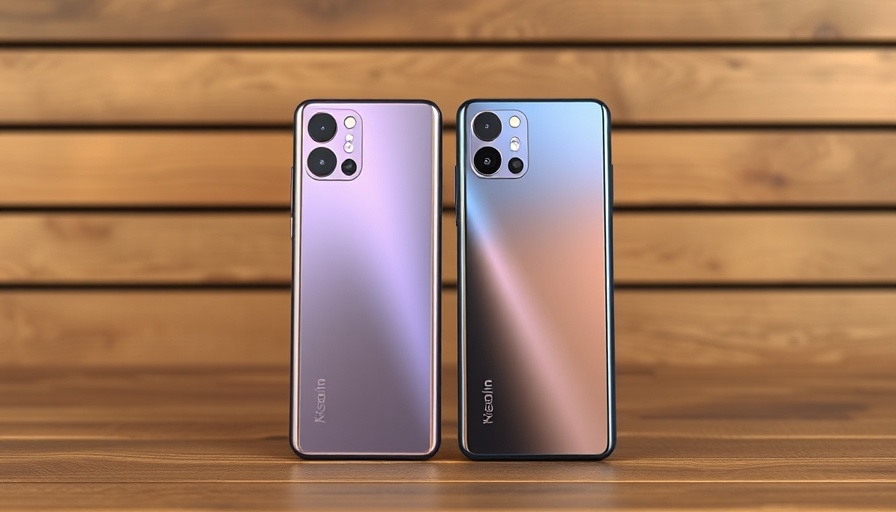
The Rise of Budget Smartphones: Samsung's Latest Innovations
As the annual Mobile World Congress (MWC) unfolds in Barcelona, Samsung is making waves with the introduction of its budget-friendly Galaxy A36 and Galaxy A26 models. Priced at $400 and $300 respectively, these devices not only aim to compete against the likes of Motorola's Moto G Power 2025 but also against Apple’s latest entry into the affordable smartphone market, the iPhone 16e, which retails for a hefty $599. With the A-series, Samsung underscores its commitment to making advanced technology accessible to a broader audience.
Software Updates: Competitive Advantages in a Crowded Market
A standout feature of the Galaxy A36 and A26 is their promise of up to six years of software updates. This commitment marks a significant upgrade from Samsung’s previous four-year Android OS and five-year security update policy. Such longevity in software support is particularly appealing for cost-conscious consumers who seek a device that remains relevant and secure over time. This position not only enhances the value proposition of these budget smartphones but also challenges competitors who typically offer shorter update cycles.
Feature-Rich Designs for Everyday Use
Interestingly, the new Galaxy A devices integrate advanced features typically reserved for higher-end models. With enhanced durability, a vibrant 6.7-inch AMOLED display, and Corning's Gorilla Glass Victus+ for improved resistance, these smartphones are designed to withstand daily wear and tear. Along with IP67 ratings for water and dust resistance, Samsung's marketing for these models emphasizes the idea that premium features can coexist in budget devices, aiming to capture the price-sensitive yet quality-seeking consumer segment.
AI Integration: Bridging the Gap Between Budget and Premium
Samsung is also embracing the AI movement with its new A-series smartphones, integrating “Awesome Intelligence” components that enhance creative features and user experience. Tools like Circle to Search allow users to seamlessly identify phone numbers, URLs, or music directly from their screens, a testament to Samsung’s effort to provide a utility that adds real value to everyday activities. As smartphones continue to evolve, the role of AI will be critical in differentiating devices within the competitive market, even at affordable price points.
Looking Ahead: Future Developments in Samsung’s A-Series
As Samsung prepares for the general availability of these models later this March, the Galaxy A36 and A26 are poised not just to capture market shares but to redefine the standards of what budget smartphones can offer. In a landscape where consumers are increasingly discerning about technology investments, the A-series could very well be the benchmark for future entrants into this space, compelling other manufacturers to step up their game in terms of software longevity, build quality, and feature sets.
Actionable Insights for Industry Leaders
For executives and decision-makers across industries, the advancements seen in Samsung's latest budget smartphones provide numerous insights. The extensive software support is a clear signal toward the importance of investing in long-term customer satisfaction—a principle applicable across various sectors. Moreover, the incorporation of AI tools highlights how integrating innovative technology can not only enhance product experience but also boost brand loyalty and customer engagement. Companies looking to innovate should consider similar strategies that prioritize longevity and user-centered design.
In conclusion, the 2025 releases of the Galaxy A36 and A26 illustrate a critical shift toward offering substantial features and security in budget smartphones, signaling a reshaping of consumer expectations and competitive strategies within the tech industry. As the landscape evolves, those following these trends closely will find opportunities to leverage similar advancements in their sectors.
 Add Row
Add Row  Add
Add 




Write A Comment